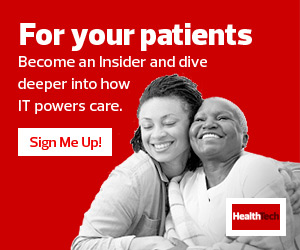What Effect Is the Pandemic Having on the Nursing Shortage?
The American Nurses Association recently wrote a letter to U.S. Department of Health and Human Services Secretary Xavier Becerra urging him to declare the nurse staffing shortage a national crisis.
“Nurses have remained steadfast on the front lines since the beginning of the pandemic, while overcoming challenges, risks to their personal health and safety such as limited personal protective equipment and the physical, emotional and mental health burden of the COVID-19 virus,” reads the letter. “Now, the Delta variant is causing cases to soar, overrunning hospital and staff capacity. These current circumstances have only exacerbated underlying, chronic nursing workforce challenges that have persisted for years.”
April Kapu, president of the American Association of Nurse Practitioners and associate dean for clinical and community partnerships at Vanderbilt University School of Nursing, also points out that the nursing shortage has been going on for years — the pandemic merely exacerbated it.
“It’s simple math. You need a certain complement of nurses and NPs caring for patients to provide high-quality care, but hospitals are completely full, so you’ll certainly have shortages,” she says.
Nurses and NPs are experiencing growing exhaustion and burnout from over a year of caring for patients in hospitals, clinics and patients’ homes, in addition to worrying about their own health and that of their families.
“Now they’re having to work overtime because we have sustained staffing shortages. We’re seeing a higher number of professionals, especially nurses and NPs, going into different types of jobs or leaving the profession altogether,” says Kapu.
Technologies Improve Nurses’ Daily Workflows
Several technologies are helping to alleviate the shortage’s effects on nurses and NPs by improving efficiencies in their daily workflows and how they care for patients.
Telesitting: Traditionally, a sitter, caregiver or nurse would be assigned to supervise patients at risk of falls or any other type of injury. However, having a 1-to-1 ratio of clinicians to patients is difficult to maintain amid a nursing shortage, not to mention the staffing cost, according to an article published by Harvard Law School’s Bill of Health website. Telesitting technologies allow one nurse to monitor several patients using cameras that provide live video and audio.
Telesitting technologies can be especially useful for senior care, freeing up nurses to provide more quality care.
Telehealth: Prior to the pandemic, many providers and patients were uncomfortable with telehealth technology, according to Kapu. The necessity of telehealth during the pandemic not only increased adoption but also led to a rise in comfort levels for those using the technology, she says, and now telehealth allows nurses and NPs to see more patients in a day.
It also gives nurses and NPs the ability to visually assess patients, providing a safe way to check in on how those with COVID-19 are doing. Kapu describes an NP who had a televisit with a patient in their early 20s who was experiencing shortness of breath but wasn’t sure if it warranted a trip to the ER. The NP asked the person to walk across the room, but they were so out of breath after walking half the distance that they had to stop. Upon seeing that, the NP told the patient to go to the ER.
READ MORE: How technology eases nurses’ day-to-day duties.
“It was lifesaving for that younger person. Without the visual image, it might not have been caught,” says Kapu. “That insight is hugely valuable, and telehealth has opened up a new level of care.”
Blockchain Credentialing: For clinicians working at multiple organizations, electronic or blockchain credentialing can make the process of receiving approval to work at a specific location much easier.
“If it’s electronic, it’s so much faster than having to do everything on paper, which can take 90 to 120 days. With electronic systems, it’s substantially faster,” says Kapu.
According to NursingCenter, blockchain credentialing allows for a nurse’s credential data to be stored on multiple servers, rather than just a single server, allowing organizations to see entries in real time. This creates a public electronic ledger, making it easier for healthcare organizations to look up a nurse’s credentials and speed up approvals.













